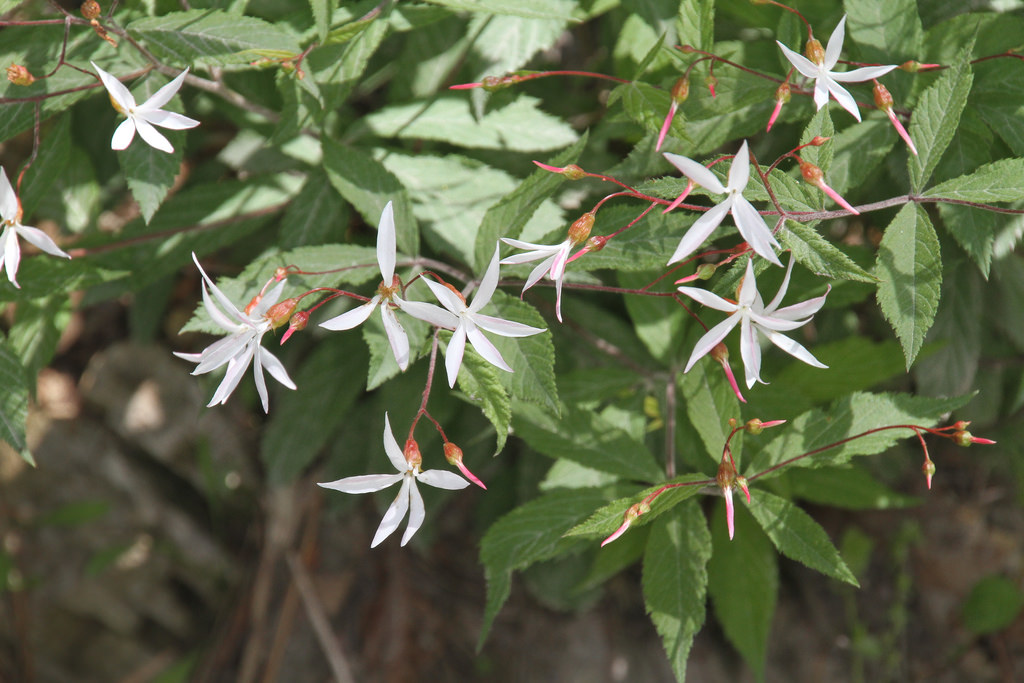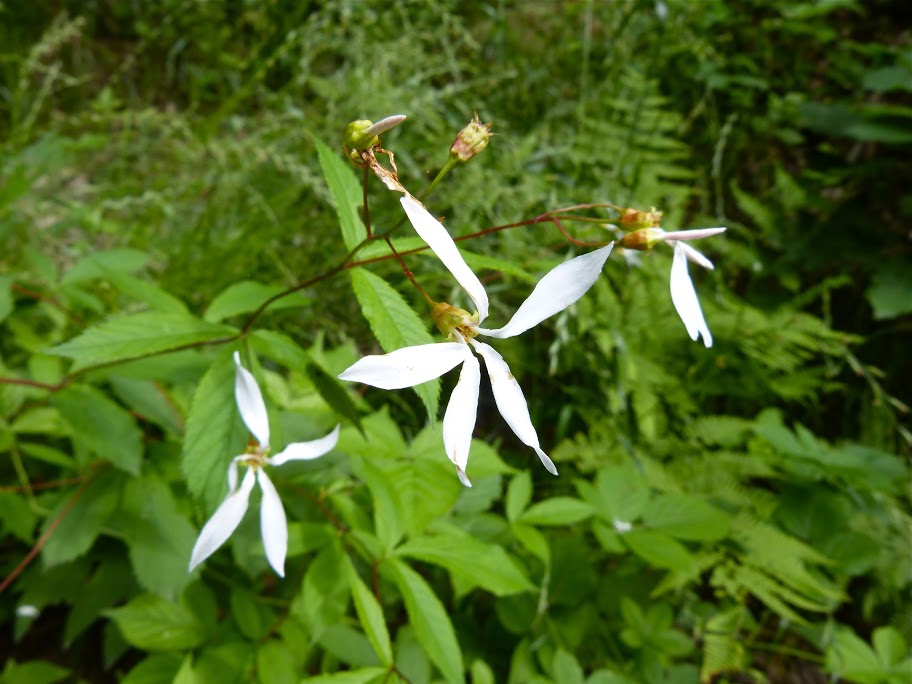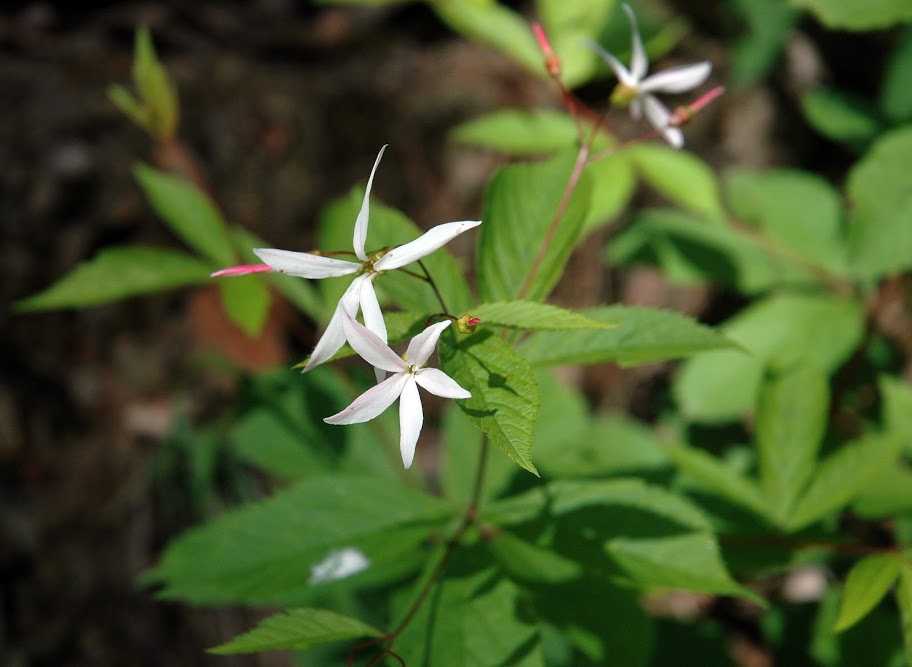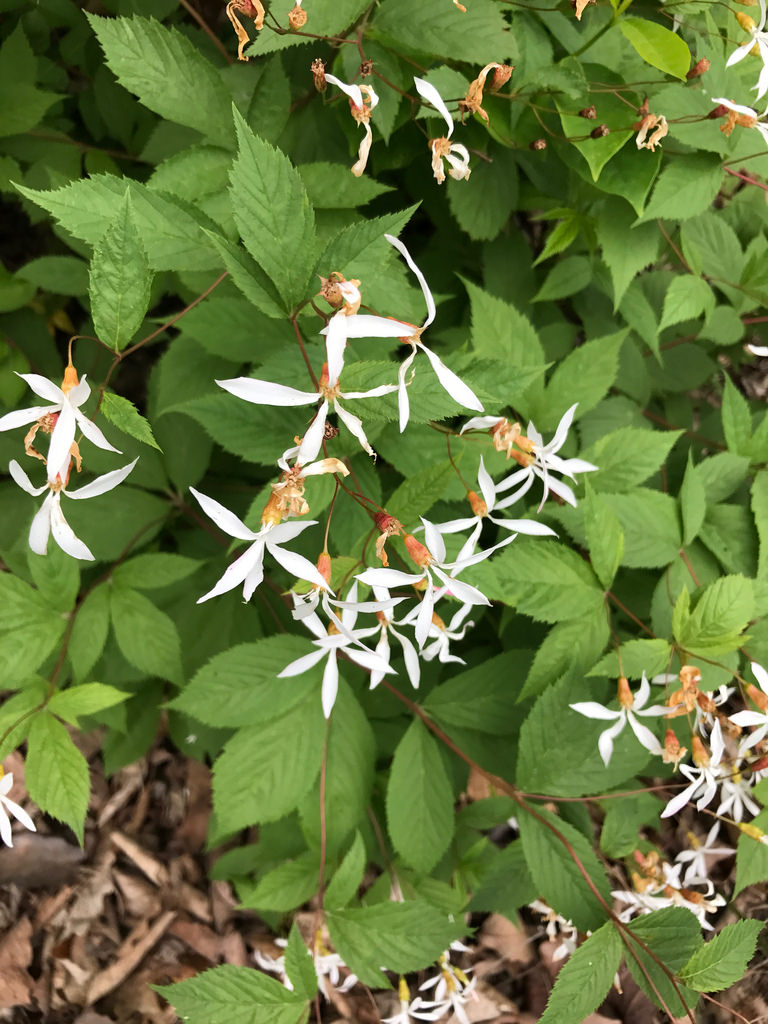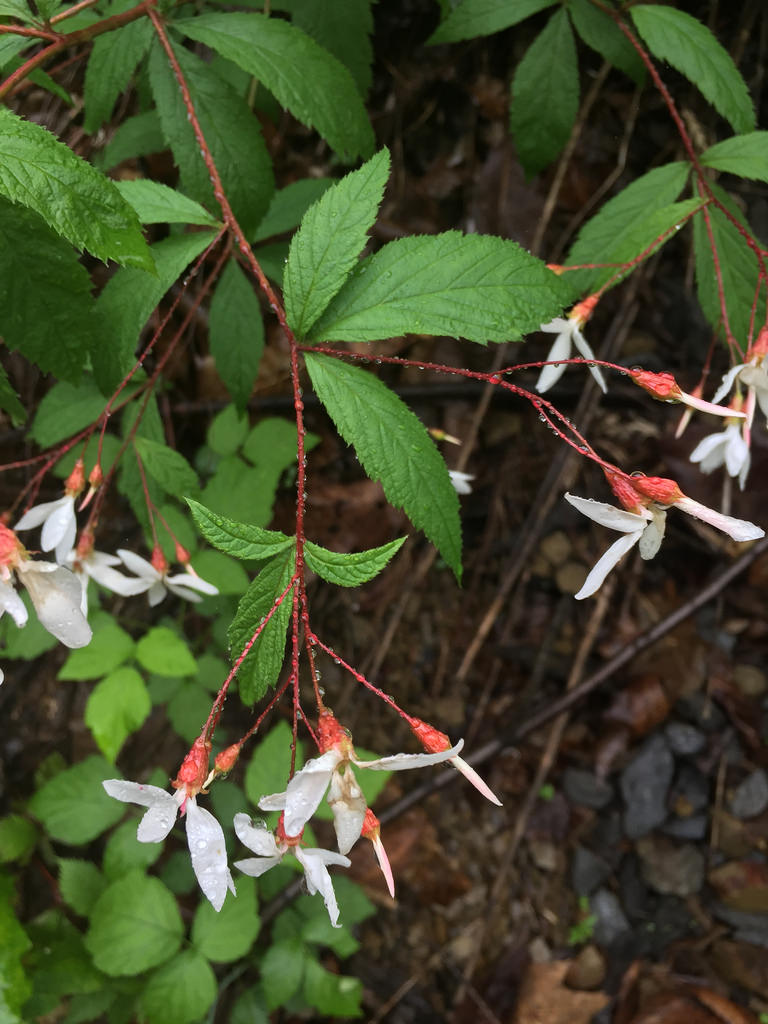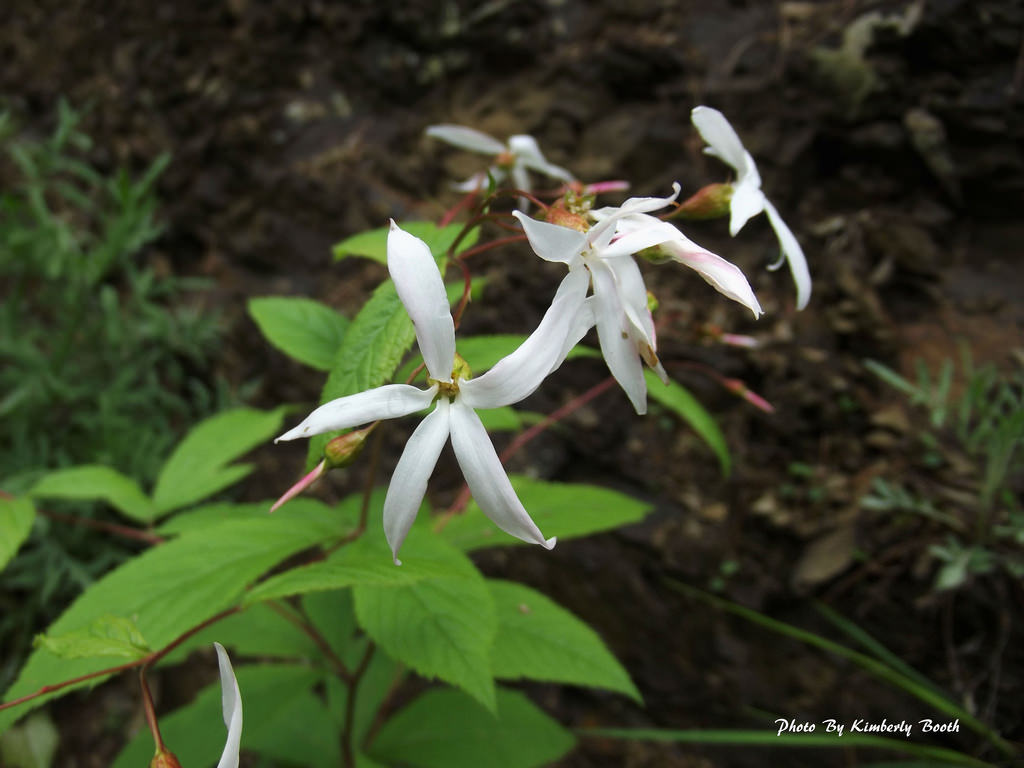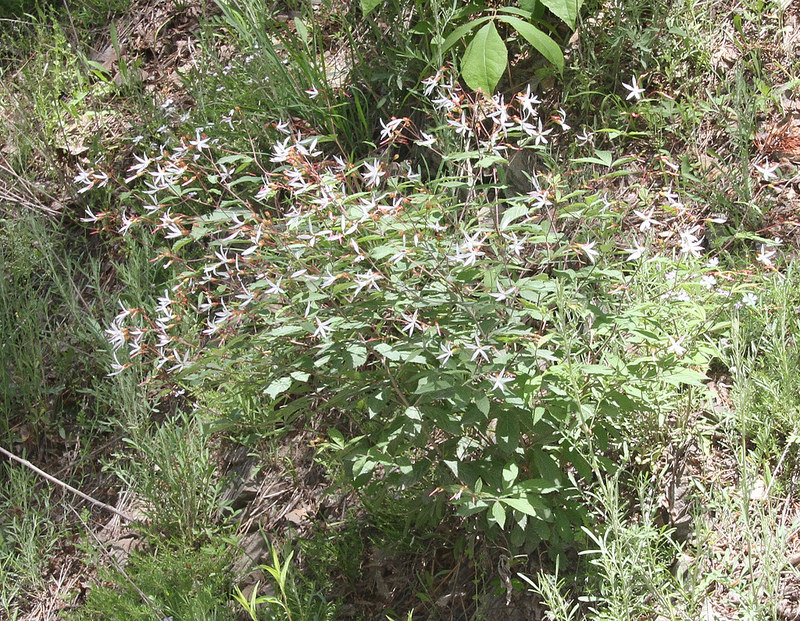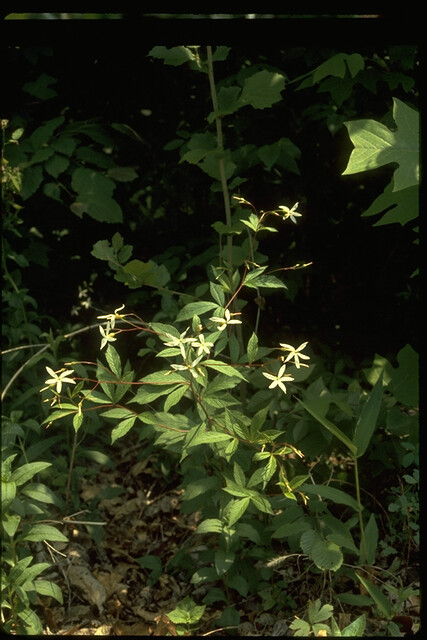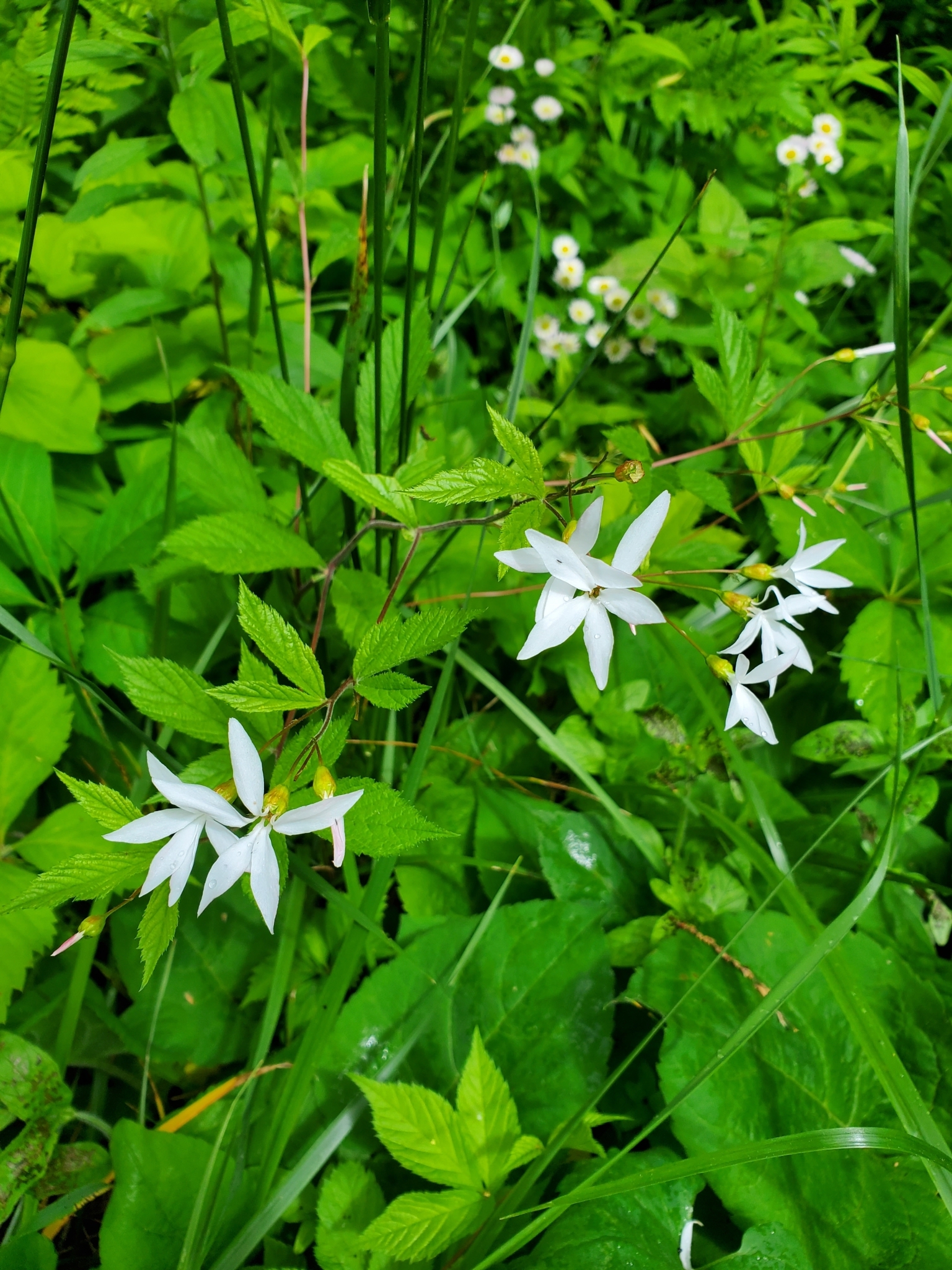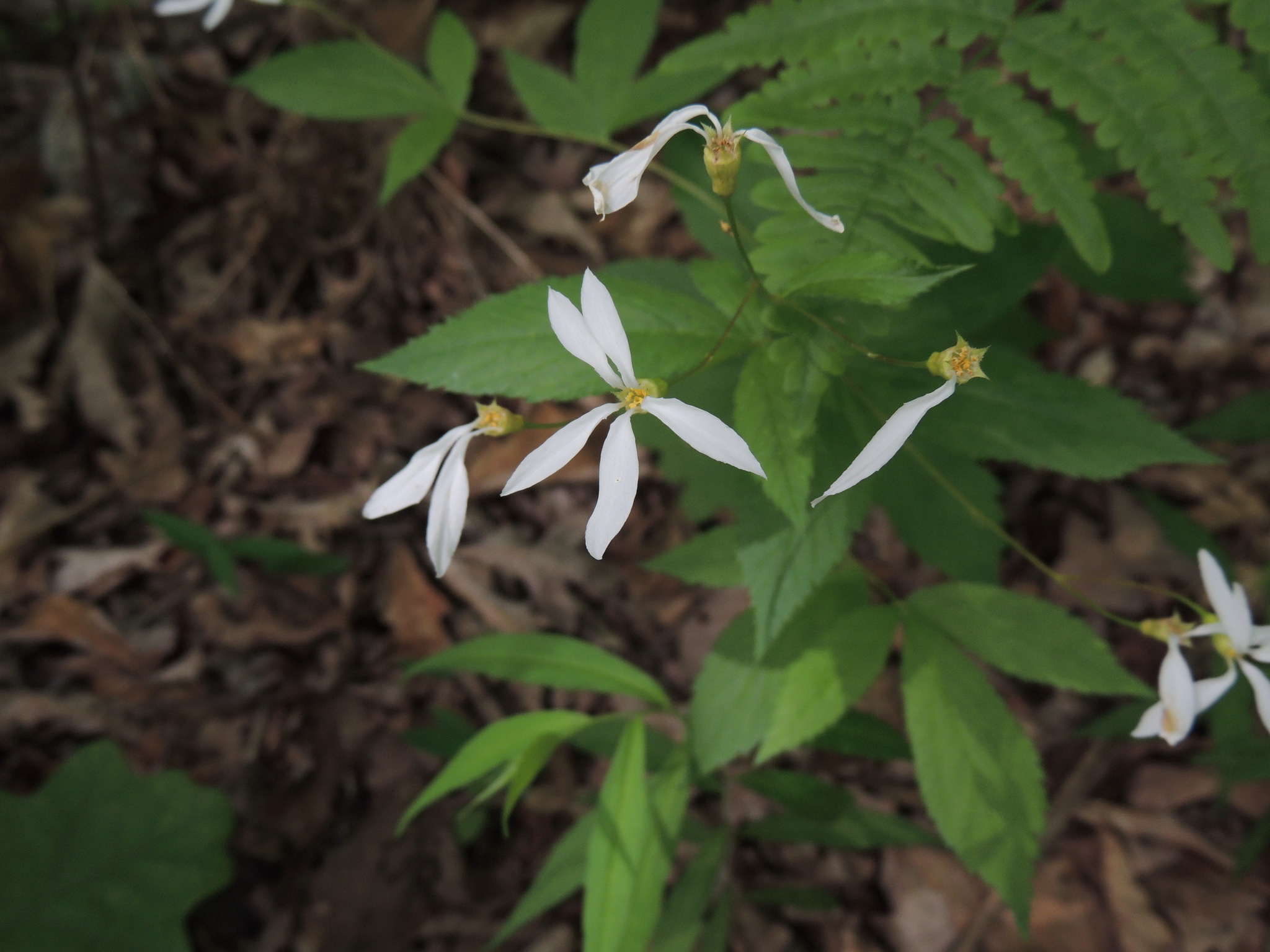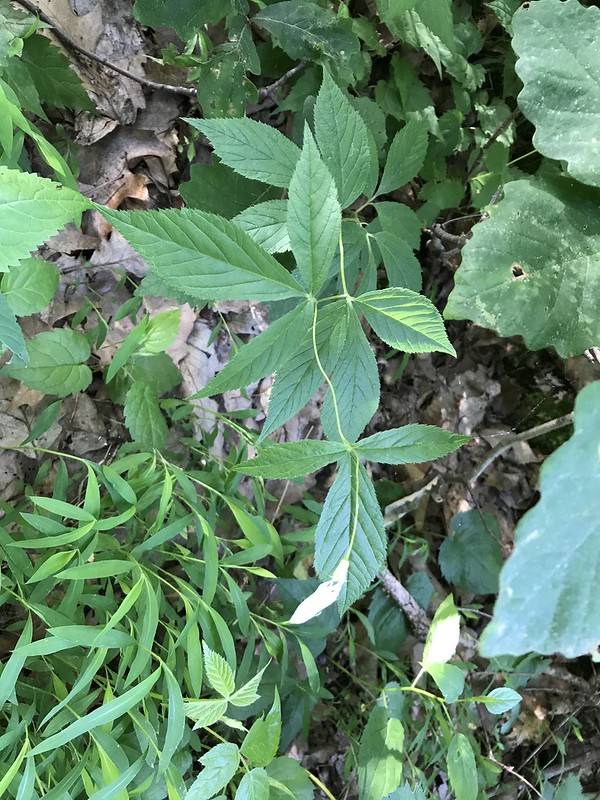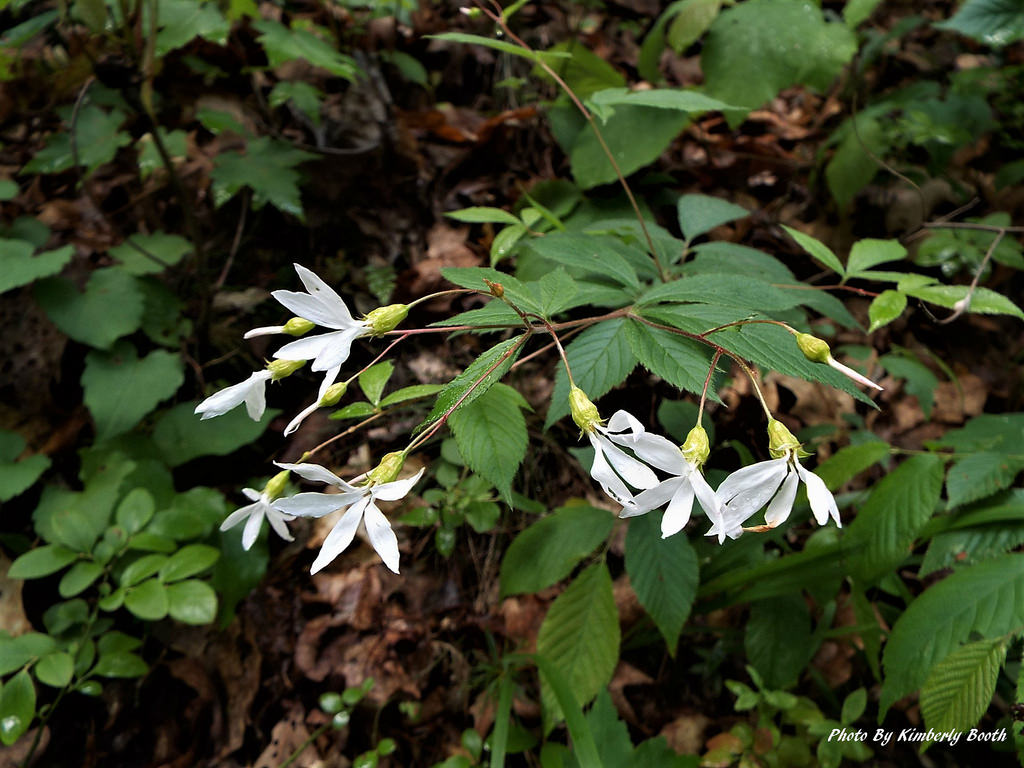Map Snapshot










105 Records
Status
Bowman’s Root is a native herbaceous perennial of woodlands of eastern North America.
Description
A member of the Rose Family (Rosaceae), Bowman’s Root has the five, separate petals characteristic of most wild members of that family. The petals are white or pale pink, narrow, and often twisted, somewhat resembling those of Amelanchier species. The leaves are nearly sessile, three-parted, and sharply toothed. The fruits are hairy. Bowman's Root is related to American Ipecac (Rosaceae). (There is another species with the common name American Ipecac, but it belongs to an entirely different family, the Euphorbiaceae. The latter species is Euphorbia ipecacuanhae).
Where To Find
In Maryland Bowman's Root occurs mainly in rich woods of the western mountains, but there are scattered occurrences in the Piedmont and the western Coastal Plain.
Seasonality Snapshot
Source: Wikipedia
| Gillenia trifoliata | |
|---|---|

| |
| Scientific classification | |
| Kingdom: | Plantae |
| Clade: | Tracheophytes |
| Clade: | Angiosperms |
| Clade: | Eudicots |
| Clade: | Rosids |
| Order: | Rosales |
| Family: | Rosaceae |
| Genus: | Gillenia |
| Species: | G. trifoliata
|
| Binomial name | |
| Gillenia trifoliata | |
| Synonyms[1] | |
Gillenia trifoliata, common name Bowman's root[1] or Indian physic,[1] is a species of flowering plant in the family Rosaceae, native to eastern North America from Ontario to Georgia. It is an erect herbaceous perennial growing to 100 cm (39 in) tall by 60 cm (24 in) wide, with three lobed palmate leaves and pale pink flowers with narrow petals and reddish calyces above red coloured stems in spring and summer.[2] Its habitat includes dry to moist upland woods and rocky banks.[3]
In cultivation, this plant has gained the Royal Horticultural Society's Award of Garden Merit.[4][5] It is very hardy to −20 °C (−4 °F) or lower, but requires a sheltered position in partial shade, with acid or neutral soil.
The root was dried and powdered by Native Americans and used as both a laxative and emetic.[6]
References
[edit]- ^ a b c "Gillenia trifoliata". Germplasm Resources Information Network. Agricultural Research Service, United States Department of Agriculture. Retrieved 25 January 2018.
- ^ RHS A-Z encyclopedia of garden plants. United Kingdom: Dorling Kindersley. 2008. p. 1136. ISBN 978-1405332965.
- ^ "Lady Bird Johnson Wildflower Center - The University of Texas at Austin". www.wildflower.org. Retrieved 2024-02-03.
- ^ "Gillenia trifoliata AGM". RHS Plant Finder. Royal Horticultural Society. Retrieved 14 July 2020.
- ^ "AGM Plants - Ornamental" (PDF). Royal Horticultural Society. July 2017. p. 43. Retrieved 2 March 2018.
- ^ Niering, William A.; Olmstead, Nancy C. (1985) [1979]. The Audubon Society Field Guide to North American Wildflowers, Eastern Region. Knopf. p. 751. ISBN 0-394-50432-1.
- Pink, A. (2004). Gardening for the Million. Project Gutenberg Literary Archive Foundation.
External links
[edit]![]() Media related to Gillenia trifoliata at Wikimedia Commons
Media related to Gillenia trifoliata at Wikimedia Commons
